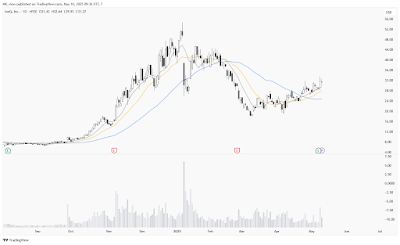What Jung, Archetypes, and the Collective Unconscious Reveal About Price Action
By The Trend Rider
Most traders obsess over charts and headlines.
But the market doesn't just run on data—it runs on drama.
Carl Jung called it the collective unconscious—a deep psychic ocean filled with archetypes that shape human behavior.
These aren’t abstract theories. They’re the hidden currents behind oil spikes, irrational rallies, and the persistent failure of conventional analysis. If you want to understand where the market is heading next, you need to understand the story it's unconsciously telling.
The Script Behind the Screen
While traders focus on earnings reports and technical indicators, the true drivers of the market operate in the shadows of human consciousness.
Jung’s groundbreaking work revealed that beneath our rational minds lies a deeper structure: archetypal forces—primordial, universal patterns that influence not only individual behavior but also the movements of entire civilizations.
“The collective unconscious is a reality in itself,” Jung wrote, “and its contents are no less real than the things we see with our eyes.”
This isn’t mysticism. It’s the missing dimension of modern market psychology—the reason prices often move in ways traditional models can’t explain.
Why Oil Doesn’t Trade on Supply Alone
Let’s consider oil in 2025.
Prices swung from $78 to $55 and back again. The analysts blamed OPEC noise and inventory data. But beneath the surface?
-
Israel vs Iran tensions (the Eternal Warrior archetype)
-
Market manipulation via media spin (Trickster energy in action)
The April crash to $55 wasn’t about barrels or Biden—it was the unconscious release of years of unresolved geopolitical tension, playing out in price.
The surge back to $78? That wasn’t demand—it was the collective mind pricing in the mythic return of the warrior.
Markets don’t just reflect supply and demand—they reflect the soul in conflict.
The Archetypes Behind World Leaders
Global leaders aren’t just policymakers—they’re archetypes projected onto a worldwide stage:
-
The Trickster (Trump): Disrupts the status quo, creating chaos that reveals hidden truths
-
The Dark Father (Putin): Wields authoritarian power and territorial instinct
-
The Wise Emperor (Xi): Exercises calculated patience and strategic long-term vision
-
The Warrior (Netanyahu): Engages in cultural, existential battles
-
The Shadow King (Khamenei): Pulls strings from the shadows, operating through proxies
These figures don’t just shape geopolitics.
They trigger archetypal responses—and those ripple through the collective psyche straight into the market.
Beyond Behavioral Finance
Behavioral finance tells us investors are irrational.
Archetypal psychology explains why.
Markets aren’t just driven by fear and greed but by the timeless dramas humanity has always enacted: war, betrayal, rebirth, conquest.
The Prediction Paradox
Here’s the challenge: Archetypal forces operate below conscious awareness, making them nearly impossible to predict with conventional tools.
The answer isn’t to abandon analysis. It’s to develop what Jung called a symbolic attitude—the ability to see behind events, look beyond the numbers, and track the myth playing out in real time.
The Trend Rider’s Archetypal Toolkit
1. Recognition Over Prediction
Instead of forecasting archetypal events, become attuned to them.
When the market behaves irrationally, ask:
What archetypal drama is unfolding here?
2. Symbolic Tracking
Monitor mythic themes in media, popular culture, and collective sentiment alongside price data.
Archetypes often surface in culture before appearing on charts.
3. Cyclical Awareness
Archetypes move in phases. Trickster gives way to King. Warrior transitions to Healer.
Recognizing the cycle is half the timing battle.
4. Shadow Integration
The more traders understand their own psyche, the more attuned they become to the collective one.
Unexamined biases are the blind spots for most market participants.
5. Paradoxical Thinking
Markets can crash and surge at the same time. Archetypal forces often produce contradictions that linear logic can't explain.
The Deep Ocean Strategy
Most traders stay at the surface—watching prices, reading news, reacting to headlines.
But the real signal exists deeper.
This isn’t about rejecting technicals or fundamentals.
It’s about adding the one dimension most neglected: the symbolic.
Jung warned that “the unconscious has a thousand ways of snaring us into situations we could not consciously imagine.”
That’s exactly what markets do—pulling us into collective dramas, using financial instruments to resolve archetypal tensions.
The Future of Market Psychology
As global events increasingly unfold like mythic stories amplified by social media and digital echo chambers, understanding archetypes is no longer optional.
It’s essential.
Future trend riders won’t just follow breakouts or price patterns—they’ll interpret the psychological tides that generate those movements before they appear.
What’s Next: The Warrior & the Oil Market
Ready to Ride Deeper?
The Trend Rider provides premium market psychology analysis for those who recognize that the greatest profits stem from understanding the most profound aspects of human nature.
Follow along. Because the market is mythic. And you're here to ride it.






